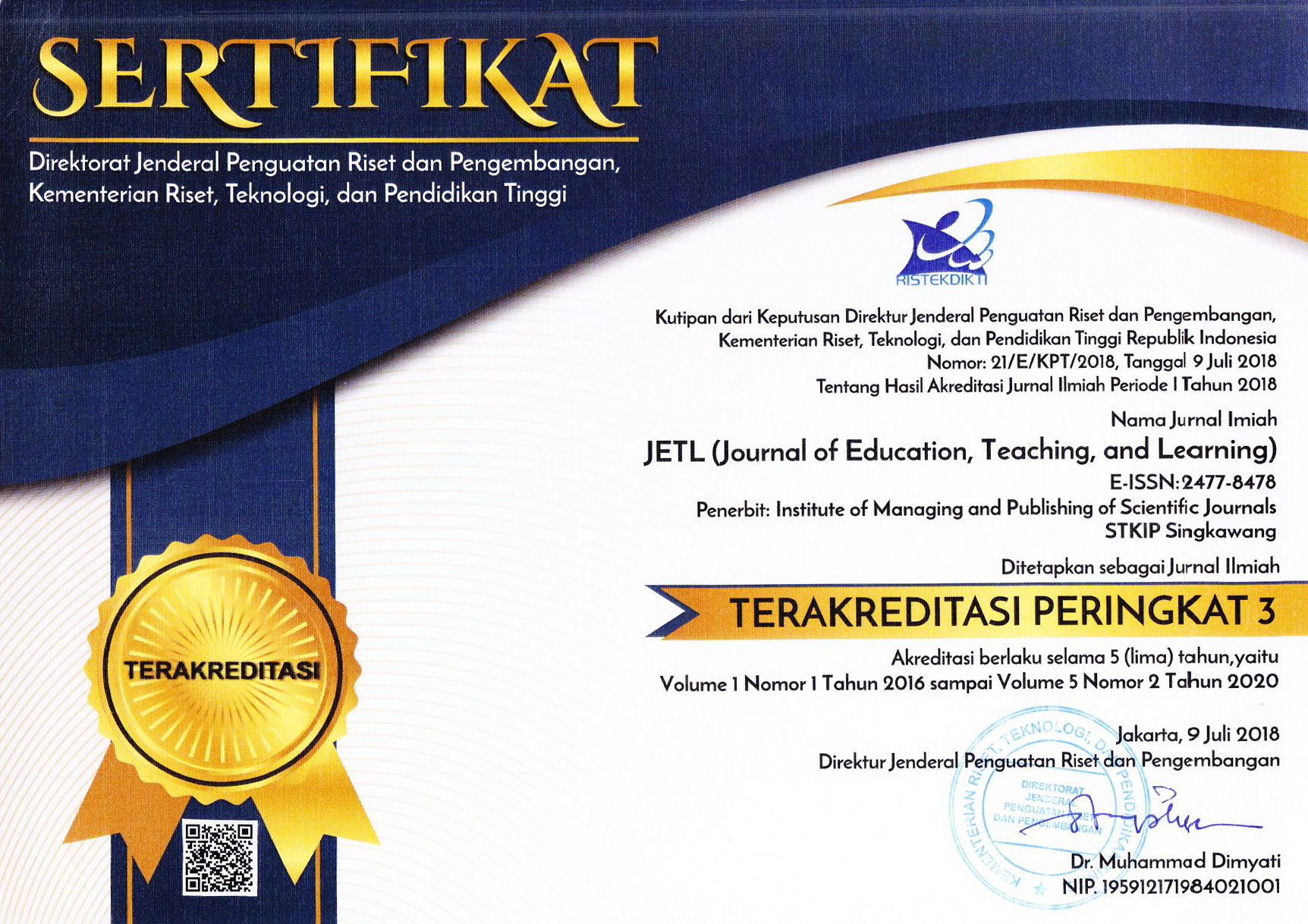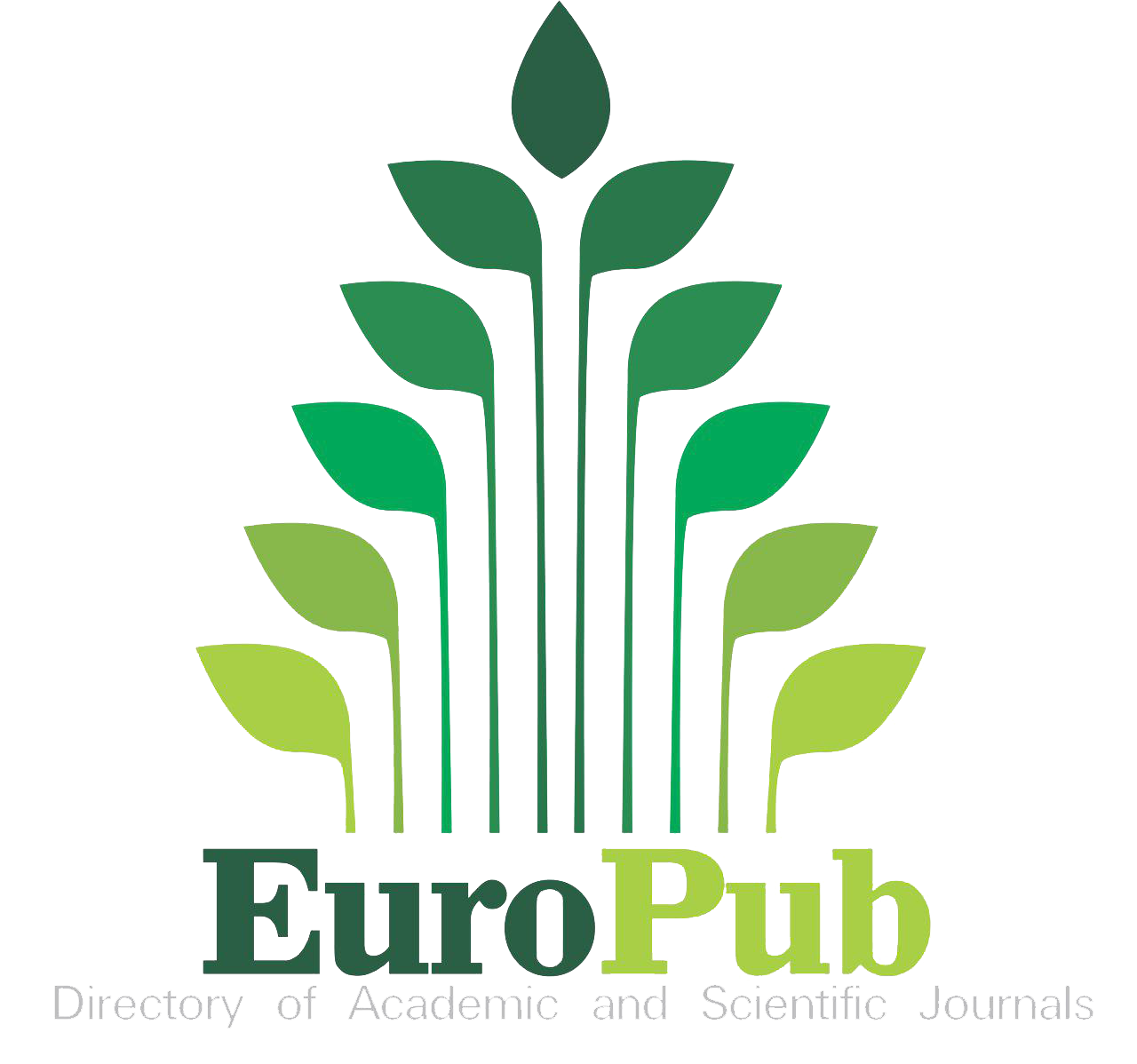IMPLEMETATION OF MODEL SAVI (SOMATIC, AUDIOTORY, VISUALIZATION, INTELLECTUAL) TO INCREASE CRITICAL THINKING ABILITY IN CLASS IV OF SOCIAL SCIENCE LEARNING ON SOCIAL ISSUES IN THE LOCAL ENVIRONMENT
Abstract
This research is motivated by the lack of critical thinking skills of fourth grade students of SDN Tanjung III, Subang district. On the basis of the need for repairs done either by applying the model of SAVI (Somatic, Auditory, Visualization, Intellectual). So the purpose of this study was to determine the increase critical thinking skills of students in Social Science before and after applying the model SAVI, the performance of teachers in applying the model SAVI, activities and students' response to the model SAVI. The method used in this research is the CAR (Classroom Action Research). Subject of research that fourth grade students of SDN Tanjung III by the number of students as many as 23 people. The instrument used was LKS (Student Worksheet), observation sheet of students and teachers as well as student questionnaire responses. From these results, it can be concluded that by applying the model in study SAVI social science with social problems in the local environment can enhance students' critical thinking skills. The result can be seen from the percentage of the overall level of mastery learning increased from 52.2% in the first cycle, 78.3% in the second cycle and 100% in the third cycle. The average grade class of students increased from 44.3 prasiklus of data with less criteria, up to the third cycle, which reached 91.3 with the criteria very well. With the improvement of students' critical thinking skills that are calculated based on the n-gain of 0.53 with the criteria of being in the first cycle, and 0.65 with the criteria of being on the second cycle, and 0.81 with the high criteria of the third cycle. The results of observations also showed that the ability of teachers and students' activity in applying the model of SAVI increased. Based on questionnaire responses, 100% of students showed interest in learning social science model with SAVI. Therefore, it is suggested that teachers use models SAVI to enhance the critical thinking skills of students so that students used to learn to analyze problems well.
Full Text:
PDFReferences
Sayer, a. (2000). Realism and Social Science. Radical philosophy reader (Vol. 1). https://doi.org/10.4135/ 9781446218730
Amri, S. & Ahmadi, IK. (2010). Proses Pembelajaran Kreatif dan Inovatif dalam Kelas. Jakarta: PT. Prestasi Pustakarya.
Anttonen, A., & Sipila, J. (1996). European Social Care Services: Is It Possible To Identify Models ? Journal of European Social Policy, 6(2), 87–100.
Dweck, C. S., & Leggett, E. L. (1988). A social cognitive approach to motivation and personality. Psychological Review, 95(2), 256–273.
Piaget, J. (1964). Part I: Cognitive development in children: Piaget. Development and learning. Journal of Research in Science Teaching, 2(3), 176–186. https://doi.org/10.1002/tea.3660020306
Shaw, A. (2009). Education in the 21st Century. Ethos, 17(1), 11–17. https://doi.org/10.1080/15374418- 009532979
Fisher, A. (2001). Critical Thinking. An Introduction. Library, 44(13), 17. https://doi.org/10.2307/2019787
Dale, E. (1946). The “Cone of Experience.” In Audio-visual methods in teaching (pp. 37–51).
Cronbach, L. J. (1988). Five perspectives on the validity argument. In Test Validity (pp. 3–17). https://doi.org/10.1017/CBO9781107415324.004
Brown, T. (2008). Design thinking. Harvard Business Review, 86(6).
Gavan, A. (2012). Visual, Auditory and Kinesthetic (VAK) learning style model. James Cook University. Retrieved from http://www.jcu.edu.au/wiledpack/ modules/fsl/JCU_090460.html
Meier, Dave. (2002). The Accelerated Learning Handbook: Panduan kreatif dan efektif merancang program pendidikan dan pelatihan. Penerjemah : Rahmani Astuti. Bandung : Kaifa.
King, A. J. (2009). Visual influences on auditory spatial learning. Philosophical Transactions of the Royal Society of London. Series B, Biological Sciences, 364(1515), 331–339. Retrieved from http://rstb.royalsocietypublishing.org/cgi/doi/10.1098/rstb.2008.0230nhttp://rstb.royalsocietypublishing.org/content/364/1515/331.short
Rose, D. (2014). Accelerated learning. Education Training. Retrieved from http://www.ncsl.org/research/ education/accelerated-learning-options.aspx
Capps, D. K., & Crawford, B. A. (2013). Inquiry-Based Instruction and Teaching About Nature of Science: Are They Happening? Journal of Science Teacher Education, 24(3), 497–526.
Dhingra, K. (2003). Thinking about television science: How students understand the nature of science from different program genres. Journal of Research in Science Teaching, 40(2), 234–256.
Conway, M. A. (2005, October). Memory and the self. Journal of Memory and Language.
Dweck, C. S., & Leggett, E. L. (1988). A social cognitive approach to motivation and personality. Psychological Review, 95(2), 256–273.
Jensen. (1969). “How much can we boost IQ and scholastic achievement”: Addendum. Harvard Educational Review, 39(1), 1–123. https://doi.org/10.1037/h0037827
Ennis, R. H. (1993). Critical thinking assessment. Theory Into Practice.
Kemmis, S. (2009). Action research as a practice-based practice. Educational Action Research, 17(3), 463–474.
Cronbach, L. J. (1975). The two disciplines of scientific psychology. American Psychologist, 30(2), 116–127. https://doi.org/10.1037/h0076829
Abidin, Yunus. (2014). Desain Sistem Pembelajaran Dalam Konteks Kurikulum 2013. Bandung : PT Refika Aditama.
Blackwood, B. (2007). Snatch Skill Transfer Exercises. Strength and Conditioning Journal, 29(6), 62–66. Retrieved from http://pibserver.us.es/gtb/usuario _acceso.php?centro=$USEG¢ro=$USEG&d=1
Gardner, H. (1985). Frames of Mind: The Theory of Multiple Intelligences. The Theory of Multiple Intelligences. https://doi.org/10.2307/3324261
Cronbach, L. J. (1975). The two disciplines of scientific psychology. American Psychologist, 30(2), 116–127. https://doi.org/10.1037/h0076829
DOI: http://dx.doi.org/10.26737/jetl.v1i1.35
Refbacks
- There are currently no refbacks.

This work is licensed under a Creative Commons Attribution-NonCommercial 4.0 International License.
Published by:
Institute of Managing and Publishing of Scientific Journals STKIP Singkawang
Sekolah Tinggi Keguruan dan Ilmu Pendidikan (STKIP) Singkawang
Address : STKIP Singkawang, Jalan STKIP - Kelurahan Naram Singkawang, Kalimantan Barat, INDONESIA, 79251
No. Telp. : +62562 420 0344
No. Fax. : +62562 420 0584
JETL (Journal of Education, Teaching, and Learning)
e-ISSN : 2477-8478
p-ISSN : 2477-5924

Editor in Chief Contact: [email protected] / Wa: +6282142072788
Publisher Contact: [email protected] / Wa: +6282142072788
Management Tools
JETL Indexed by:
JETL (Journal of Education, Teaching, and Learning) is licensed under a Creative Commons Attribution-NonCommercial 4.0 International License.











